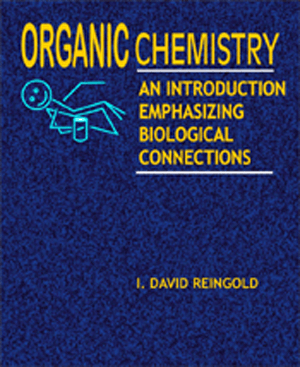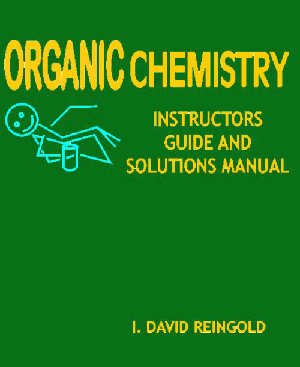Subtotal: 0.0
Organic Chemistry: An Introduction Emphasizing Biological Connections REVISED Edition
₹3700
Organic Chemistry: An Introduction Emphasizing Biological Connections REVISED Edition
This is a
course in Organic Chemistry. YIKES! Isn?t that the killer course that
sophomores around the world dread? Why are they teaching it to us, students
taking our first chemistry course? How will we survive?
Don?t panic. Yes, organic is
the course that sophomores around the world dread, although if you press further
you will discover that once they got into it, a surprising number of them liked
it. No, it is not a killer course. It used to be, when it was taught as an
exercise in memorization, but these days most courses are taught with an
emphasis on understanding what is going on, and if you approach it in that way,
you will discover that everything fits together so neatly there is little need
for memorization. Molecules usually do what makes sense, and if you learn to
think the way they do, their choices will make sense to you too. You are getting
this as a first course because your teachers have come to the conclusion that
organic is a more sensible way to begin your college-level chemistry than the
traditional rehash and amplification of high school chemistry. I hope that by
the time you finish this course, you will agree.
Few of you taking this course
intend to be chemistry majors. Most, I suspect, are taking it because you have
to, because it is required for medical or some other professional school, or
simply as a prerequisite for some course you want to take in another department,
perhaps biology. Organic chemistry is the branch of chemistry most applicable to
biology and life processes. Further, it involves only a small subset of the
available elements. And understanding organic chemistry does not require a great
deal of math. For all these reasons, organic makes a logical starting point on
your chemical journey. Further, most of you have not seen much organic chemistry
before, so the problem of half the class already ?knowing? the material
disappears.
In order to present organic
chemistry at the introductory level I have had to remove some of the material
traditionally covered in a sophomore-level course. I have also added some
material at the front end to make sure you have the background necessary to
understand the organic parts. And I have slanted the treatment very deliberately
toward students interested in the life sciences. In other words, I am dealing
mostly with the organic chemistry relevant to life processes. Thus, in a real
sense, this is a treatment of BIOorganic chemistry.
For those of you who are
interested in chemistry but not biology, do not despair. This course is a good
introduction for you also. You will learn many of the ways that chemistry
applies to biology, applications that your peers at other schools may not be
getting, and frankly, a great deal of modern chemistry does interface with
biology, so this will be good for you. But at the same time you will learn
appropriate basic chemistry that can be applied to many other areas of science.
Table of Contents :
Acknowledgments
Foreword?To the Instructor
Foreword?To the Student
Introduction
Chapter 1: Basic Concepts
Chapter 2: Electronic Structure
Chapter 3: Bonding
Chapter 4: Molecular Shapes: Hybridization
Chapter 5: Polarity and Intermolecular Forces
Chapter 6: Quantities in Chemistry
Chapter 7: Alkanes and Cycloalkanes
Chapter 8: Acids and Bases
Chapter 9: Reaction Intermediates
Chapter 10: Alkenes I
Chapter 11: Alkenes II
Chapter 12: Alkynes
Chapter 13: Substitution Reactions
Chapter 14: Structure Determination
Chapter 15: Chirality
Chapter 16: Elimination Reactions
Chapter 17: Alcohols and Ethers
Chapter 18: Carbonyl Chemistry I: Aldehydes and Ketones; Carbohydrates
Chapter 19: Carbonyl Chemistry II: Carboxylic Acids, Acid Chlorides, Anhydrides, and Esters
Chapter 20: Carbonyl Chemistry III: Reactions Involving the a Carbon
Chapter 21: Metabolic Transformations: The Logic of Biological Reaction Sequences
Chapter 22: Nitrogen Chemistry: Amine, Imines, and Amides; Protein Structure
Chapter 23: Aromatic Chemistry: Electrophilic Aromatic Substitution; Nucleic Acid Structure
Appendix



Please Login To Write A Review
Login